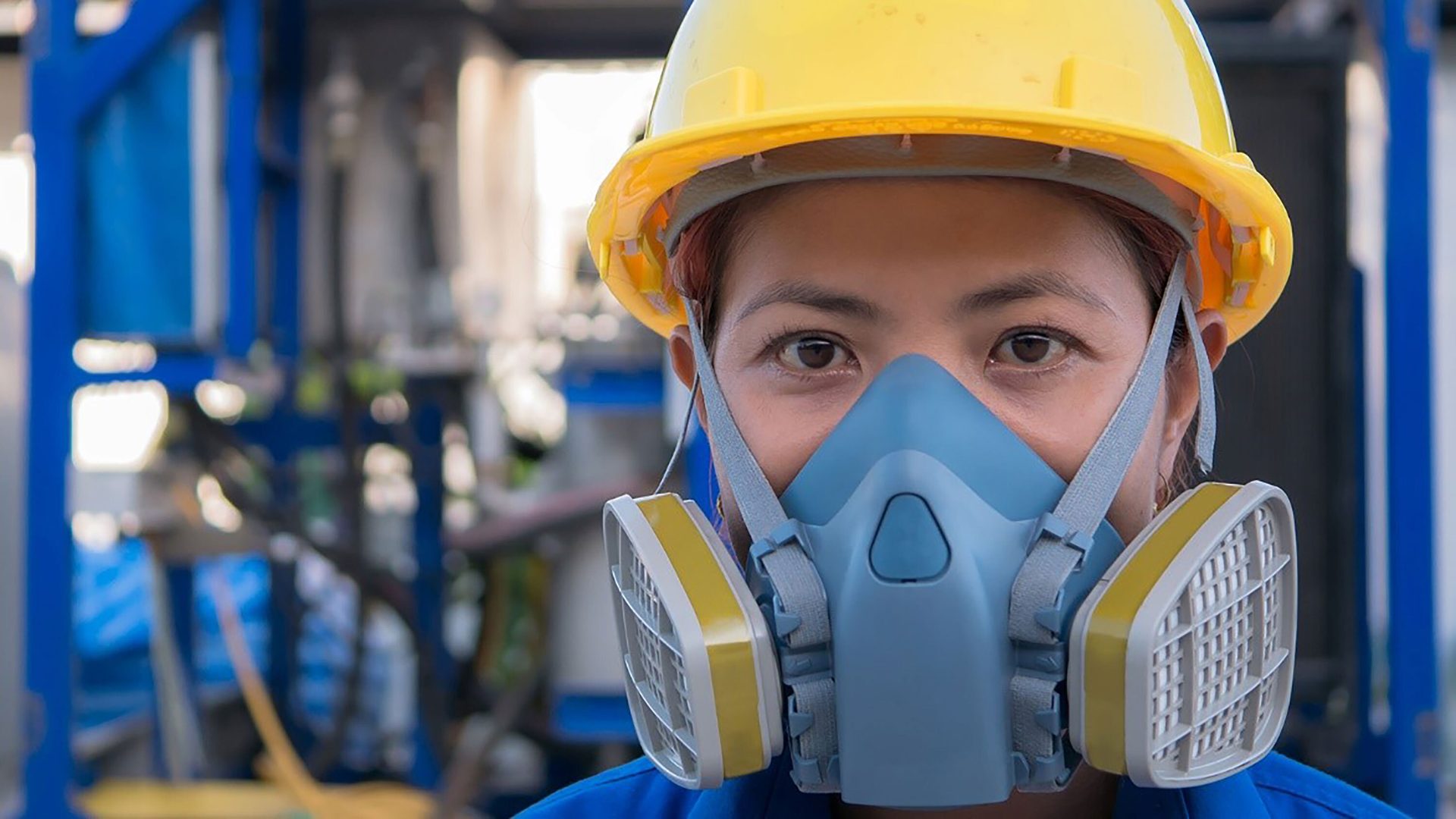COVER STORY

solutions
Sustainable

Photo: Chainarong Prasertthai / iStock / Getty Images Plus
Advancing PFAS-free hi-vis safety apparel
By Scott A. Corrao
W
ater-repellent and waterproof fabrics are critical for workers in many different industries, including first responders, oil and gas workers, public safety officers, rail workers and construction workers, among others. These workers rely on the effectiveness of these garments to stay safe and to be able to perform their job duties; however, many of these garments have traditionally contained hydrofluorocarbons, fluorine, and per- and polyfluoroalkyl substances (PFAS), also known as “forever chemicals.” Although these durable water repellent (DWR) finishes provide excellent protection against moisture and stains, PFAS-based repellents may persist in the environment and can accumulate in human and animal tissues, potentially leading to adverse health effects. There is a need for new solutions.
The need for PFAS-free alternatives
PFAS are a group of synthetic chemicals commonly used in the textile industry to impart water-resistant properties to fabrics. These chemicals have been prized for their ability to create durable, waterproof coatings, making them a staple in the production of outdoor and protective clothing, including high visibility (hi-vis) garments. However, PFAS have come under intense scrutiny due to their persistence in the environment and potential to bioaccumulate in human and animal tissues. PFAS do not easily break down, leading to widespread environmental contamination.
While the direct risk to a person wearing a high-visibility garment made with PFAS is likely low, the broader health and environmental concerns stem from the manufacturing, environmental persistence, and breakdown of these chemicals, prompting regulatory actions and a push within the industry to find safer alternatives.
In response to growing concerns about PFAS, the textile industry has shifted towards alternative chemicals, such as C6 and C8 fluorocarbons, for water repellency. These alternatives were initially adopted because they were believed to be less harmful and more environmentally friendly than traditional long-chain PFAS. However, C6 and C8 chemicals share similar chemical structures and properties with PFAS, making them equally persistent in the environment. Despite being positioned as safer options, they still pose significant environmental risks and have the potential to bioaccumulate, leading to similar concerns.
The concerns surrounding PFAS stem from the manufacturing and breakdown of these chemicals, prompting regulatory actions and a push within the industry to find safer alternatives.
Strict safety standards
Developing flourine-free hi-vis garments is a complex process. Hi-vis garments must not only align with growing regulatory requirements and consumer expectations for eco-friendly products, but also must adhere to stringent safety standards outlined by organizations such as the American National Standards Institute (ANSI) and the Occupational Safety and Health Administration (OSHA). To remain in compliance, these garments must meet specific requirements related to color, retroreflective tape, and color fastness.
High visibility colors must maintain their brightness and integrity over time, even after exposure to environmental factors such as sunlight, moisture, and washing. Water-repellent finishes must not interfere with the safety performance of these fabrics. Adhering to these standards is pushing the industry to redefine its commitment to both safety and environmental stewardship, ensuring that workers are protected while minimizing the ecological footprint of their protective gear.
Advancements in textile technology
One of the most promising advancements in textile technology is the development of C0 durable water-repellent fabrics. C0 DWR fabrics are designed using non-fluorinated chemical compounds, typically incorporating silicone, polyurethane, or hydrocarbon-based treatments. Unlike PFAS-based fabrics, which rely on long-chain fluorocarbons that persist in the environment and pose significant health risks, C0 fabrics use materials that are both effective in repelling water and safer for human health and the planet. These non-toxic compounds do not bioaccumulate, and they degrade more readily in the environment, reducing their long-term ecological impact. While C0 treatments may require more frequent reapplication to maintain their water-resistant properties, their safety profile and environmental benefits make them a superior choice for industries committed to sustainability and reducing harmful chemical use in protective apparel.
Although the industry continues to refine these treatments to match the oil and stain resistance of PFAS-based repellents, C0 DWR fabrics already offer sufficient stain resistance and reliable water repellency. This ensures that outdoor workwear and reflective apparel maintain their functional performance without the environmental and health risks associated with PFAS chemicals. Since 2023, C0 DWR has been the preferred fabric used on all Reflective Apparel water-repellent hi-vis apparel.
The future of eco-friendly
As the industry moves forward, the focus is shifting from simply replacing PFAS to rethinking the entire approach to water repellency. Research is currently underway to develop bio-based water repellent technologies that harness the natural properties of certain plant-based oils and waxes. These innovations aim to create fabrics that are not only PFAS-free but also biodegradable, further reducing the environmental impact of hi-vis garments.
In addition, nanotechnology is being explored as a potential game-changer for the industry. By manipulating materials at the molecular level, researchers hope to create ultra-thin, PFAS-free coatings that provide superior water resistance while being virtually undetectable in terms of weight and feel. These future innovations, though still in the research phase, promise to revolutionize the way we think about waterproof clothing and could soon set new benchmarks for performance and sustainability in the hi-vis garment sector.
Scott A. Corrao is president of Reflective Apparel, which specializes in high-quality safety apparel, including a complete line of ANSI 107-2020 and CSA compliant garments and customizable uniform solutions that prioritize protection and brand identity for businesses. Reflective Apparel also brings the same safety-first thinking to performance comfort apparel with WildSpark™, a wildly reflective line of athleisure wear. The company’s unwavering mission is to ensure individuals' safety and visibility, whether at work or play. For more information visit www.reflectiveapparel.com and www.sparkyourwildside.com.

